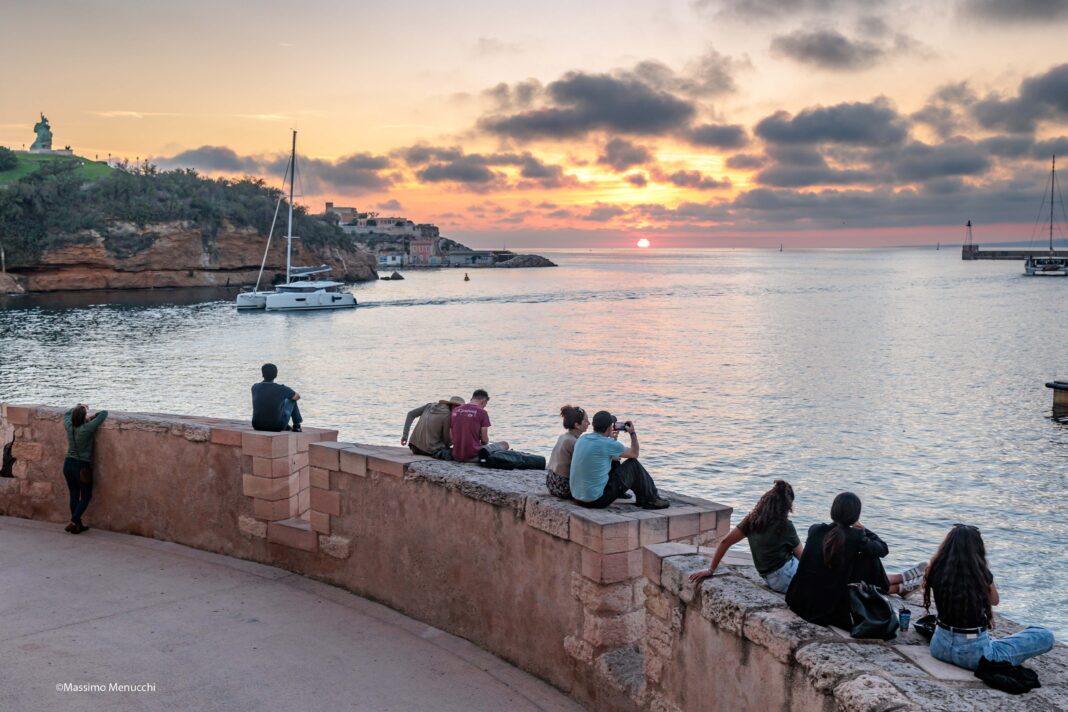Travellers tend to sail right past Marseille when they visit southern France—literally, if they happen to be on a Mediterranean cruise. Yet this uncut gem of Provence is gleaming just under the surface. Its reputation as a dangerous (by European standards) city is outdated, thanks to concerted rejuvenation over the past decade. Moreover, Marseille, which has a metro population of almost two million, is the most diverse city in France, if not Europe, giving it a chill, live-and-let-live vibe, from its medieval, graffiti-covered Panier district to its bustling Old Port.
True, queers don’t often stand out here—the reigning fashion is slovenly chic, and the philosophy can, at times, feel like “men should be men.” That latter trait can be attributed to the city’s relatively large Muslim community from Africa and the Middle East. However, queer fun thrives in the less visible parts of the city. Its dusty, gloriously sunny charm more than makes up for the lack of drag queens sashaying down its main street. That said, there’s no shortage of drag at the annual Marseille Pride celebration, usually held in early July.
If you’re worried about missing Marseille’s major mentionables, or if you just want to stay on the right side of the tracks, read Marseille LGBTQ+ travel guide.
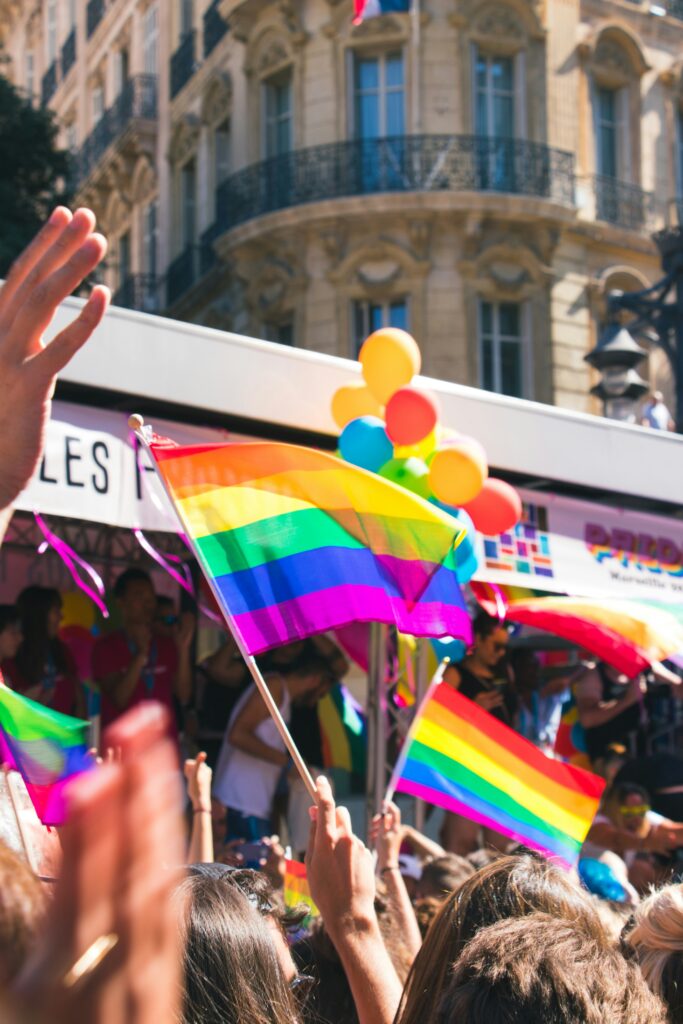
Drag makeover: Marseille edition
Marseille has gotten a facelift in the years since it was named a “European capital of culture” in 2013. Soon after that watershed moment, the fascinating (and fascinating-looking) MUCEM museum (1 Esplanade J4, Fort Saint-Jean, Marseille) opened along the city’s Mediterranean coastline, whereas the city’s Cathédrale de La Major (Place de la Major, Marseille) finally reopened just down the street, once again beckoning sailors to Marseille’s wind-swept shores. Also rejuvenated: the nearby medieval-era Panier district, which has transformed from an epicentre of petty crimes and drug trafficking into a whimsical maze of street art and shopping. Here, you can find one of Marseille’s most unique products: a pea-green block of anti-aging Marseillais soap, made from authentic local olive oil. (If it isn’t green and unscented, it’s not the real thing.)
The city’s perennial attractions include the striking, Byzantine-inspired Notre-Dame de la Garde Basilica (Rue Fort du Sanctuaire, Marseille), which rests atop the city’s highest hill, giving visitors stunning views of the region. Just below it, the Old Port hums with tanned fishmongers, scrappy street musicians and muscled dock workers taking smoke breaks. If you stay long enough, you may even enjoy exfoliation from the sands that regularly blow across the Mediterranean from the Sahara Desert. If you’re a literature lover, you can catch a ferry to the Château d’If, whose 16th-century fortress inspired Alexandre Dumas’s The Count of Monte Cristo, an adventure novel with a character that could be read as a lesbian. Once you’ve also seen the spectacular neoclassical Palais Longchamp monument (Boulevard Philippon, Marseille), you can finally rest easy at an LGBTQ+-friendly hotel like the New Hotel of Marseille (71 Boulevard Charles Livon, Marseille) or the hyper-hip Mama Shelter Marseille (64 Rue de la Loubière, Marseille), knowing that you’ve discovered one of France’s most surprising cities.
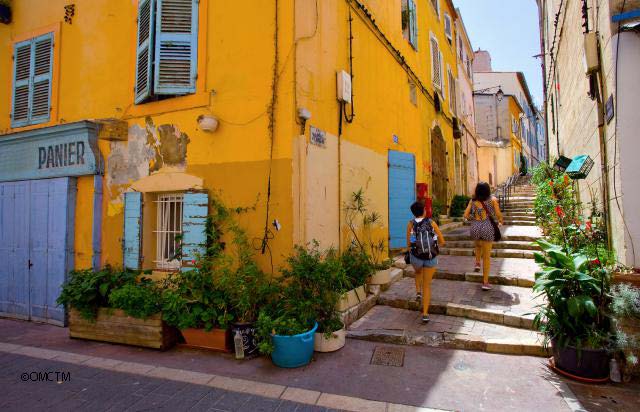
Where to find the action, queer, edgy or otherwise
Marseille may be cleaner, brighter and safer than it was 11 years ago, but just like in any other big city, you should avoid its seedier sections, which lie in the city’s outskirts, especially the north. On the other hand, the city’s most bohemian neighbourhood, Cours Julien, is where you’ll have the most fun.
Whether you’re interested in a top-notch graffiti tour or simply want a piece of the queer action, the noisy cafés and vibrant nightlife of this quartier will deliver. Cours Julien contains the city’s edgiest bookstores, boutiques and art galleries. The district also contains its best queer bar, Le Pulse (94 Cours Julien, Marseille), which is, indeed, the buzzy beating heart of Marseille gay life—the Marys meet up in its neon glow. The club is serious about its house and techno, and the fun spills outside onto its popular terrace.
Farther north, on the waterfront, Dock Des Suds (12 Rue Urbain V, Marseille) is the big-room venue of choice for club promoter Cancan Marseille, who bring in brand-name DJs for shirts-off nights out.
The warm and inclusive Aux 3G (3 Rue Saint-Pierre, Marseille) is a dedicated space for lesbians and feminists, and hosts various performances, from professional to karaoke.
For men, clean and modern Cargo Sauna (7 Rue Jean-Pierre-Moustier, Marseille), which has a decent pool, and sultry-seedy Le Trash (28 Rue du Berceau, Marseille), which is known to host a naked party or two, offer cruising options.
A less dark, more nutritious option, Les Danaïdes (6 Square Stalingrad, Marseille) is often jam-packed with Judys dining on anything from croissants to pasta. However, if you want to try Marseille’s most famous dish, le bouillabaisse, then you’re better off visiting somewhere that’s known for it, like Chez Fonfon (140 Rue du Vallon des Auffes, Marseille).
Are you nice or nautical?
Being the oldest city in France, founded by the Greeks in 600 BCE, Marseille has seen a lot of history. It has survived epidemics, Roman civil wars, the French Revolution, Nazi occupation and even digital nomads. You can learn about it all at the excellent Marseille History Museum (2 Rue Henri Barbusse, Marseille), which was founded in 1983 to trace the city’s 26 centuries of history. Something about the city’s resilience and resurgence will surely resonate in your cold queer heart.
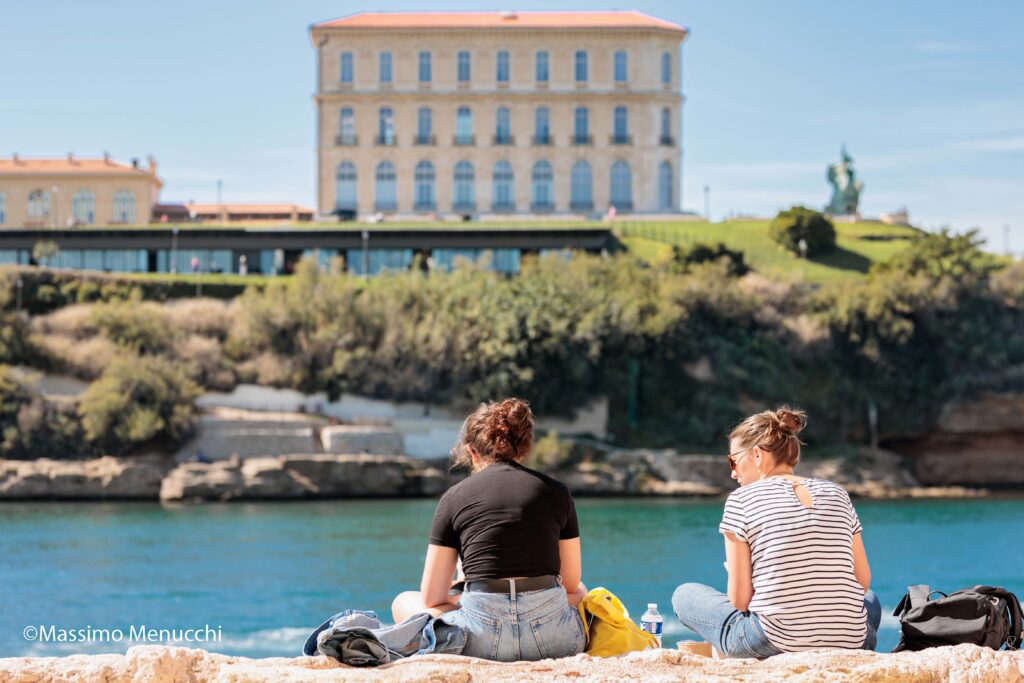
Visitors should not forget that Marseille is on the Mediterranean and so has nearby beaches. Les Plages du Prado, which are to the south, are just as nice as Nice but without the high prices. Though they don’t have spectacular views of the coastline, the cyan and cobalt water is pretty enough. The butches among us might want to trek down the coast to Mont Rose, a rocky hill that juts out into the sea. While not a beach, per se, Mont Rose does have nice views—and lots of attractive nude men. Those who clamber over the boulders can hang out at France’s oldest gay beach.
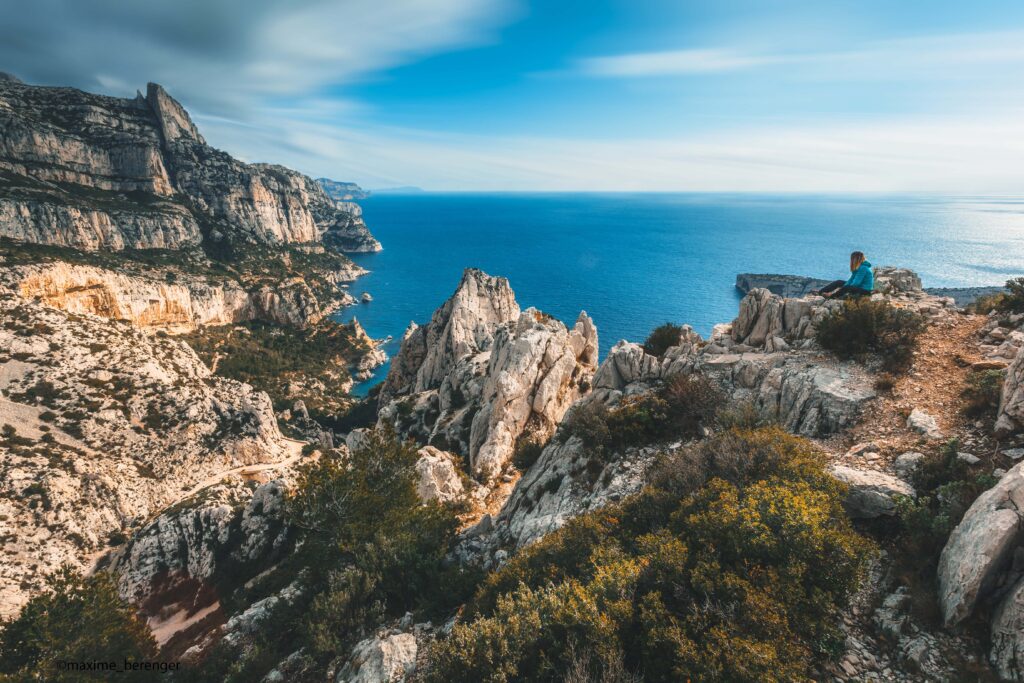
For those who agree with the Jane Austen line, “What are men to rocks and mountains,” Le Parc National des Calanques, in which Mont Rose is contained, might prove an unforgettable bookend to your Marseillais merriment. You will be floored by the endless stretch of jagged, white limestone cliffs that comprise this park, just an hour from Marseille by bus. After a hike, you can go for a swim in the many beautiful cerulean-hued pools of the park’s coves. Top it all off with dinner at Grand Bar des Goudes (28 Rue Désiré Pelaprat, Marseille), which is in the little coastal village inside the park, if you want the “classic” Calanques experience of freshly caught conger eel. Perhaps the line should be: What are men to mountains and Marseille?
